WSJ.
An architectural approach to product design. Two case studies.
The Executive Edition
The Executive Edition project uses machine learning algorithms to tailor content based on a corporate subscriber's interests and reading habits. It uses a knowledge graph schema and personalization algorithms to deliver the right content at the right time to the end user.
Please continue scrolling down. The content needs time to load. Continue scrolling and the content will load eventually. And you can scroll up and down to consume the content.
The employee dashboard is a central location where the corporate employee can view tailored content aggregated based on a machine learning schema and personalization algorithms. They can view the top news for industries, companies, business topics, market data, and a targeted calendar for relevant upcoming events in the industries of their interests.
What is the problem we hoped to solve?
Corporate subscriptions were difficult to renew because of low employee engagement. The sales team was selling a consumer version of The Wall Street Journal. Procurement at companies complained to the sales team that there was low activation of employee accounts. Why should they pay a lot of money to renew the contract?
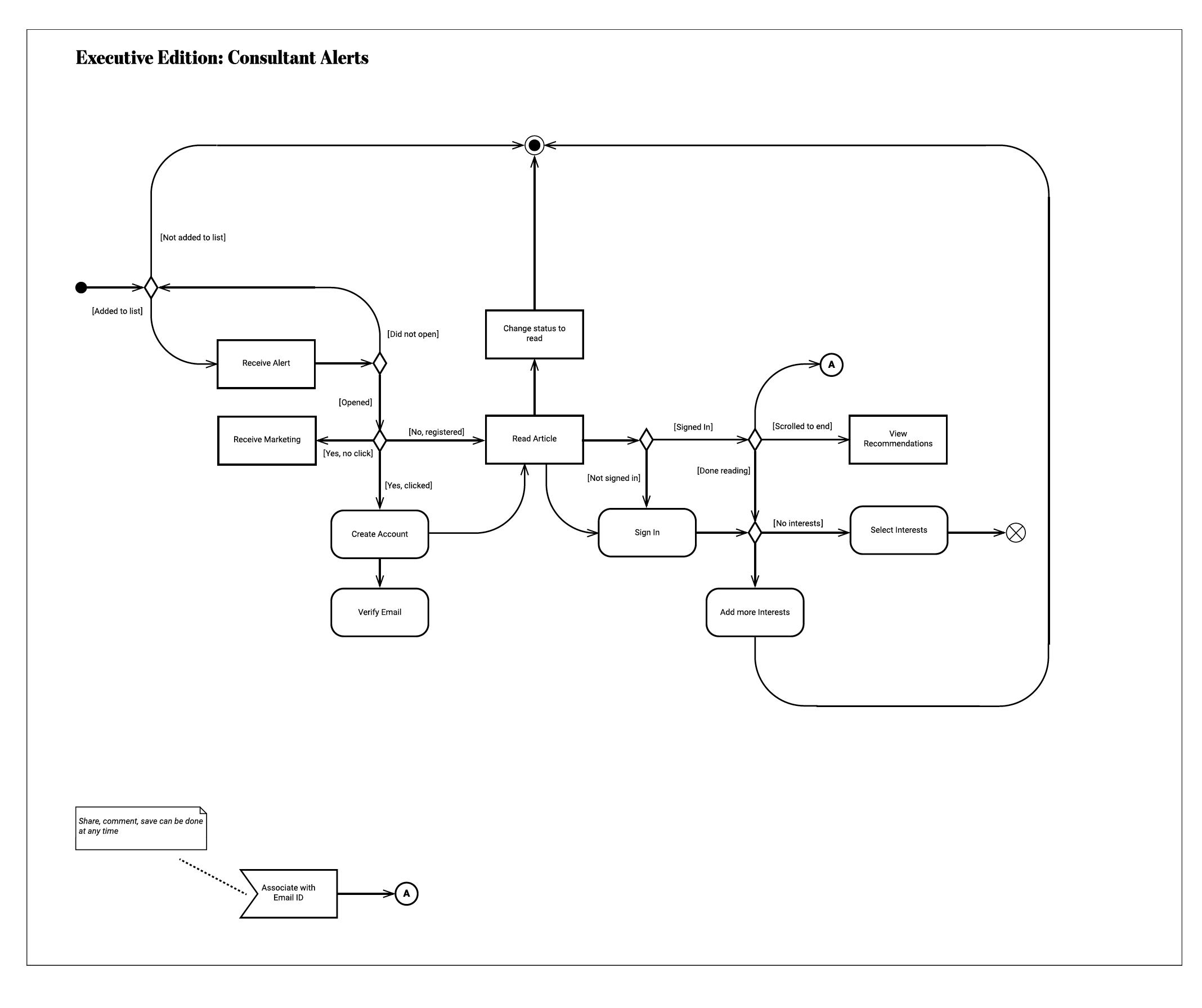
A flow diagram that shows the experience of notifying employees when new recommended articles have been published. It also allows them to train the algorithm by adding new topic interests that they’d like to be notified of when there’s new content.
Conceptual Model For The Solution Hypothesis
A tailored experience that took the organizational model of the company as its conceptual conceit. The dyad of the company and the team working together through administration in the admin panel with the end user fine-tuning their experience all lead to a sophisticated and tailored experience. This is not the consumer version of The Wall Street Journal. This is the tailored edition.
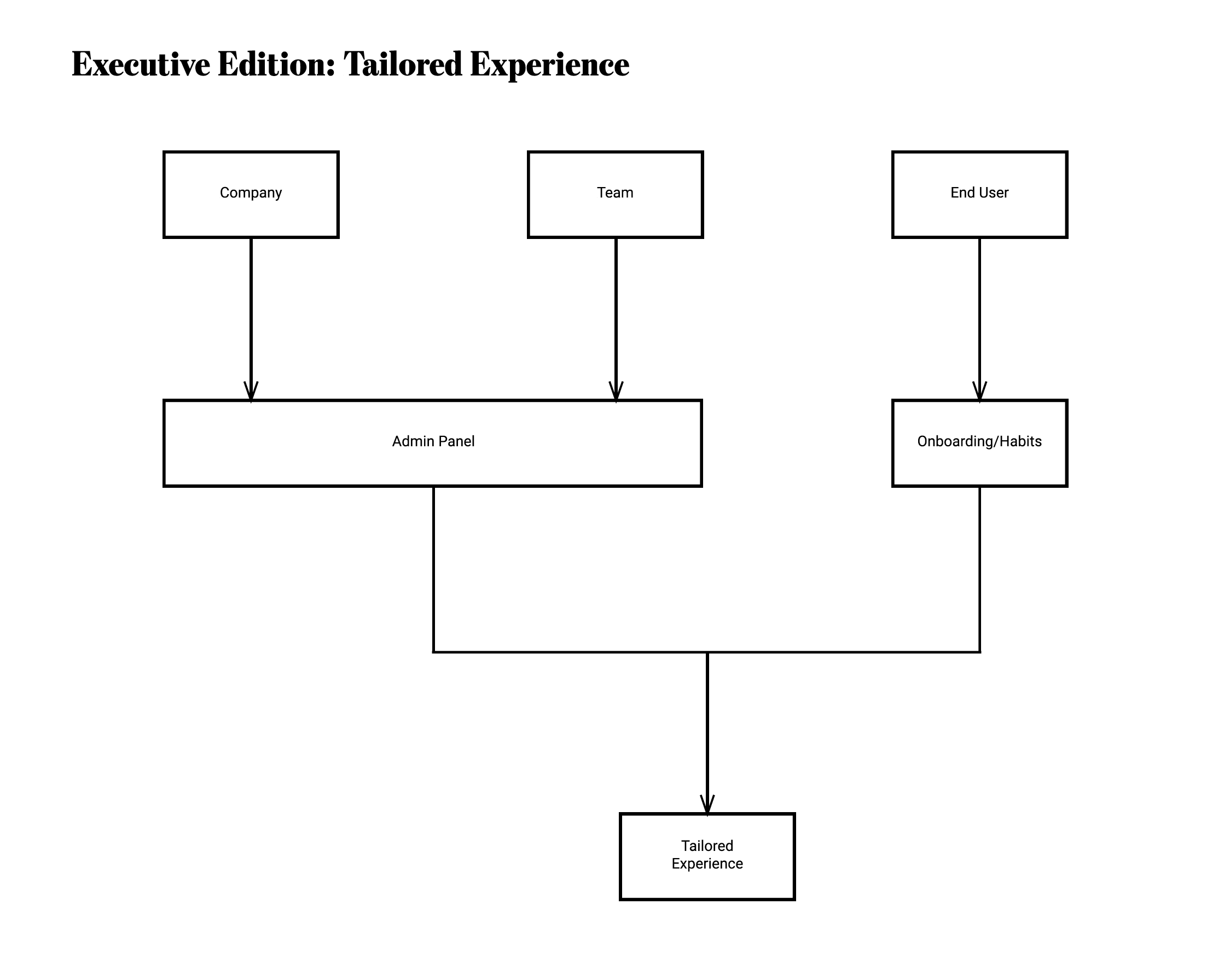
Conceptual model diagram showing tailored edition solution to the problem identified in UX Research and corporate sales.
Company And Team Mission Control: The Admin Panel
An organization, team, and company view of the stakeholders and their various interaction points with the system. The hierarchical tree diagram shows the full view of the stakeholders and the systems they interact with all through the admin panel. It also shows the extent of the software architecture we would have to build to solve the corporate sales pain point.
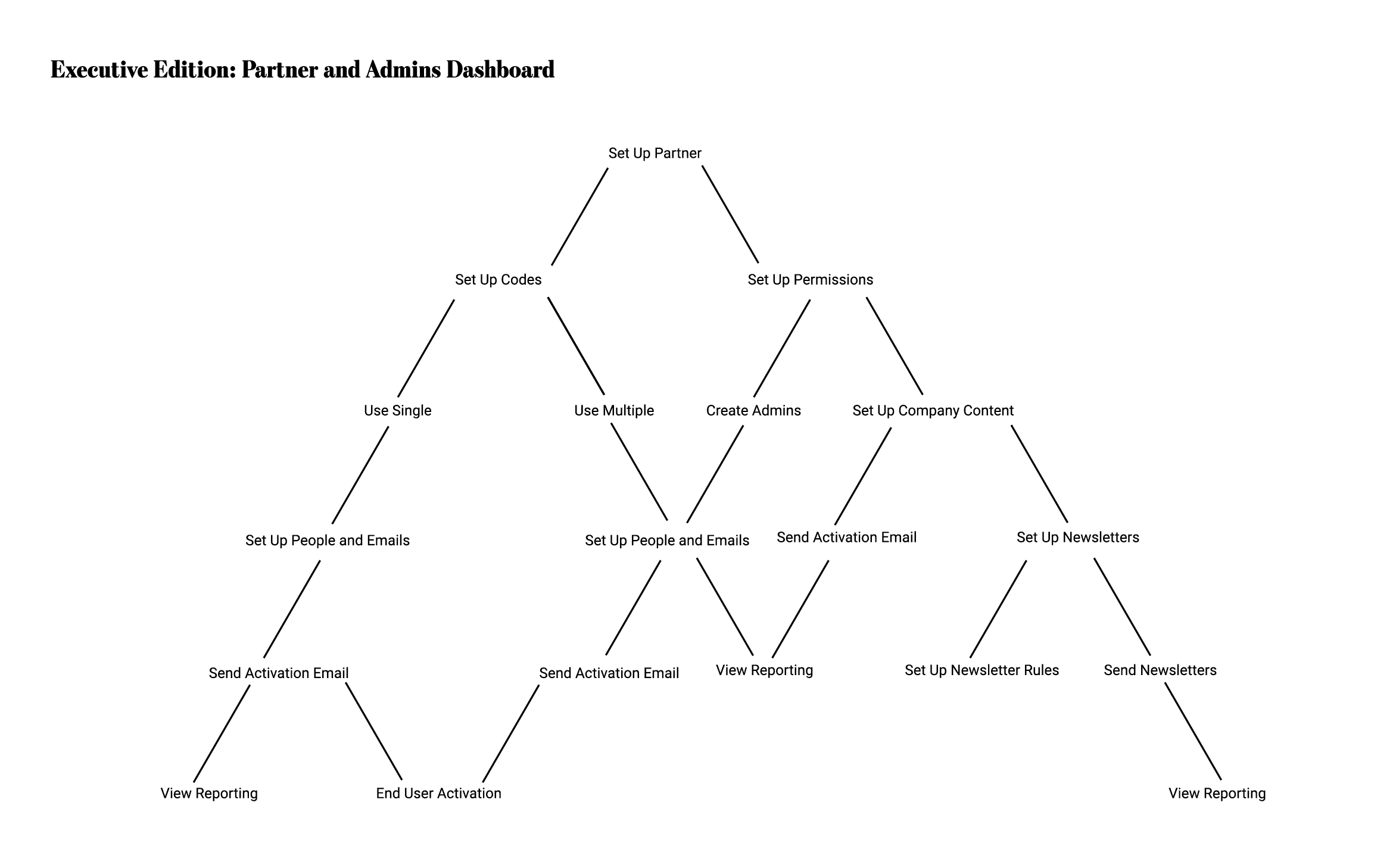
Corporate partners create the instance of the dashboard. This flows through to individual employees in teams activating their accounts.
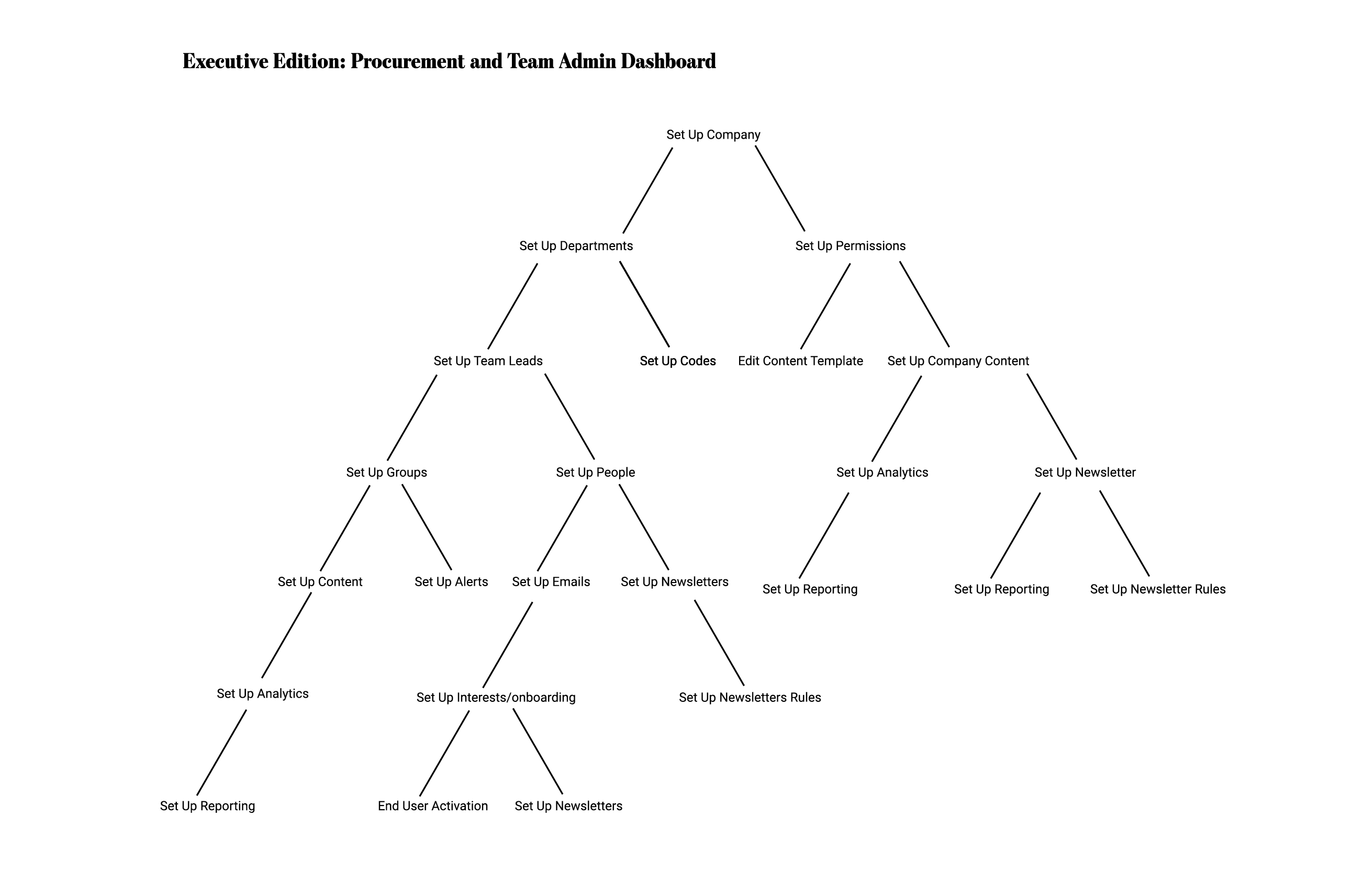
Procurement buys software for the organization, and this diagram shows how the system flows through to the individual teams in an organization and their ability to use software that helps them do their jobs better.
Strategic Vision Flow
This flow came together after two rounds of user testing conducted by research. It shows how the elements in the end-user experience displayed in the prototype video above all come together. The parts it shows are activation through onboarding, home page ribbon, employee dashboard, and discovery of new content, events, and markets.
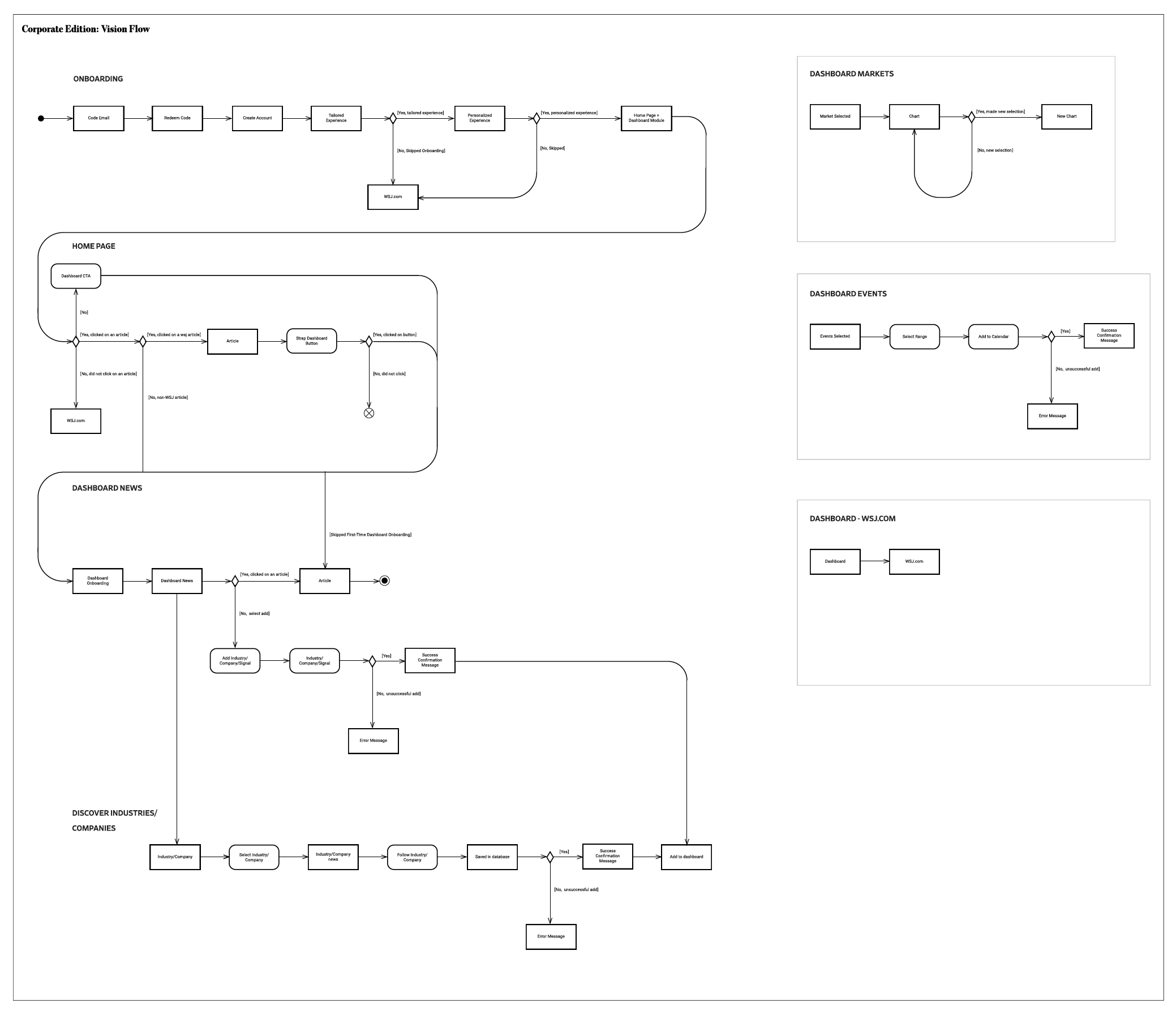
The architecture of the product in the video prototype.
Work towards the vision flow in multiple releases: Start with the MVP Flow
It’s often advisable to start small and work towards a larger vision to attain quick wins and show value to the business with a lower investment in engineering resources. The flow below shows what an MVP experience could be.
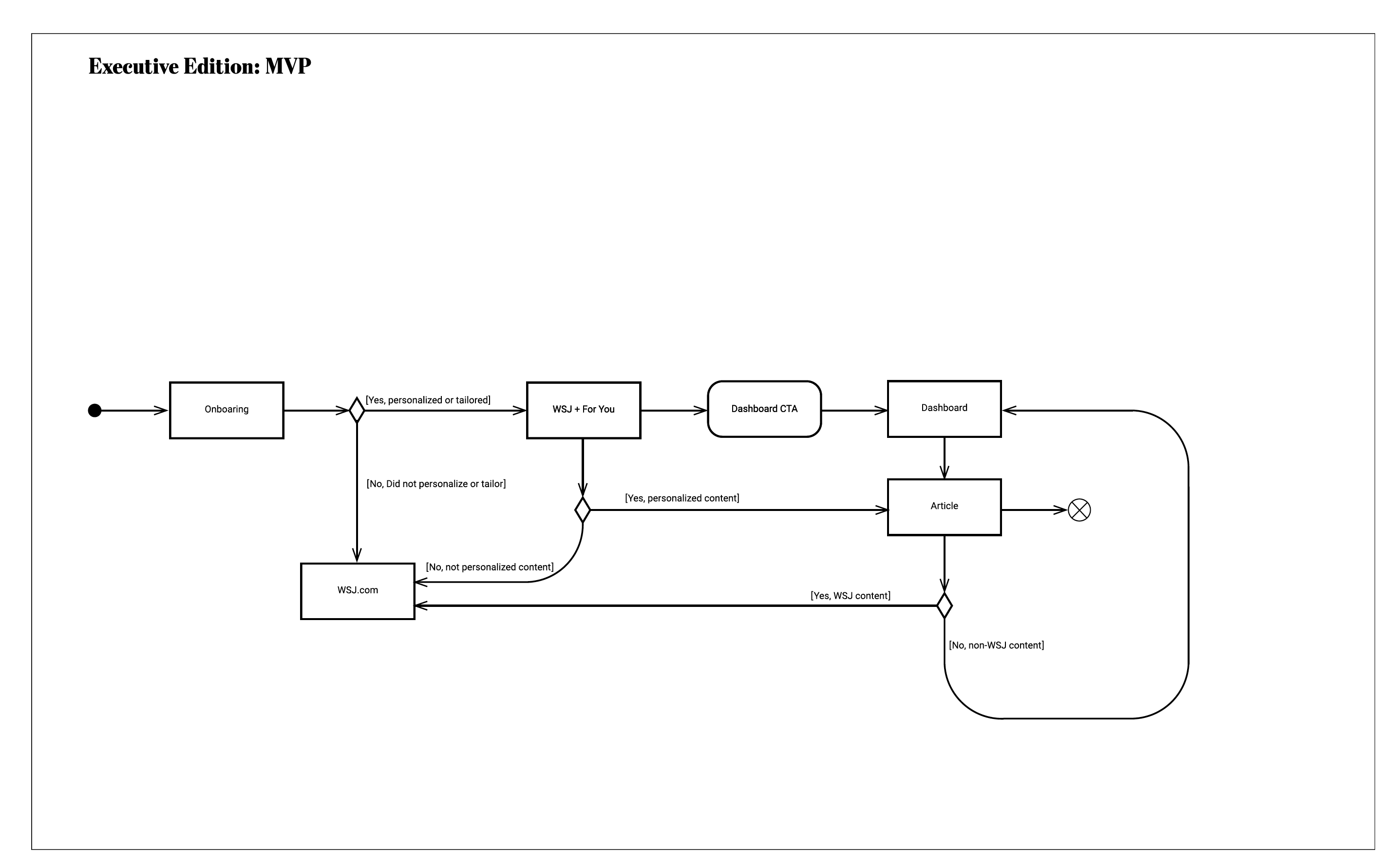
This is the experience of a pilot version of the executive edition product.
Product Strategy And Goals For The MVP Pilot
The diffusion of technology shows how a new technology will be adopted. This diagram shows the strategy for product management to take with respect to solving that pesky problem of the adoption of new technology.
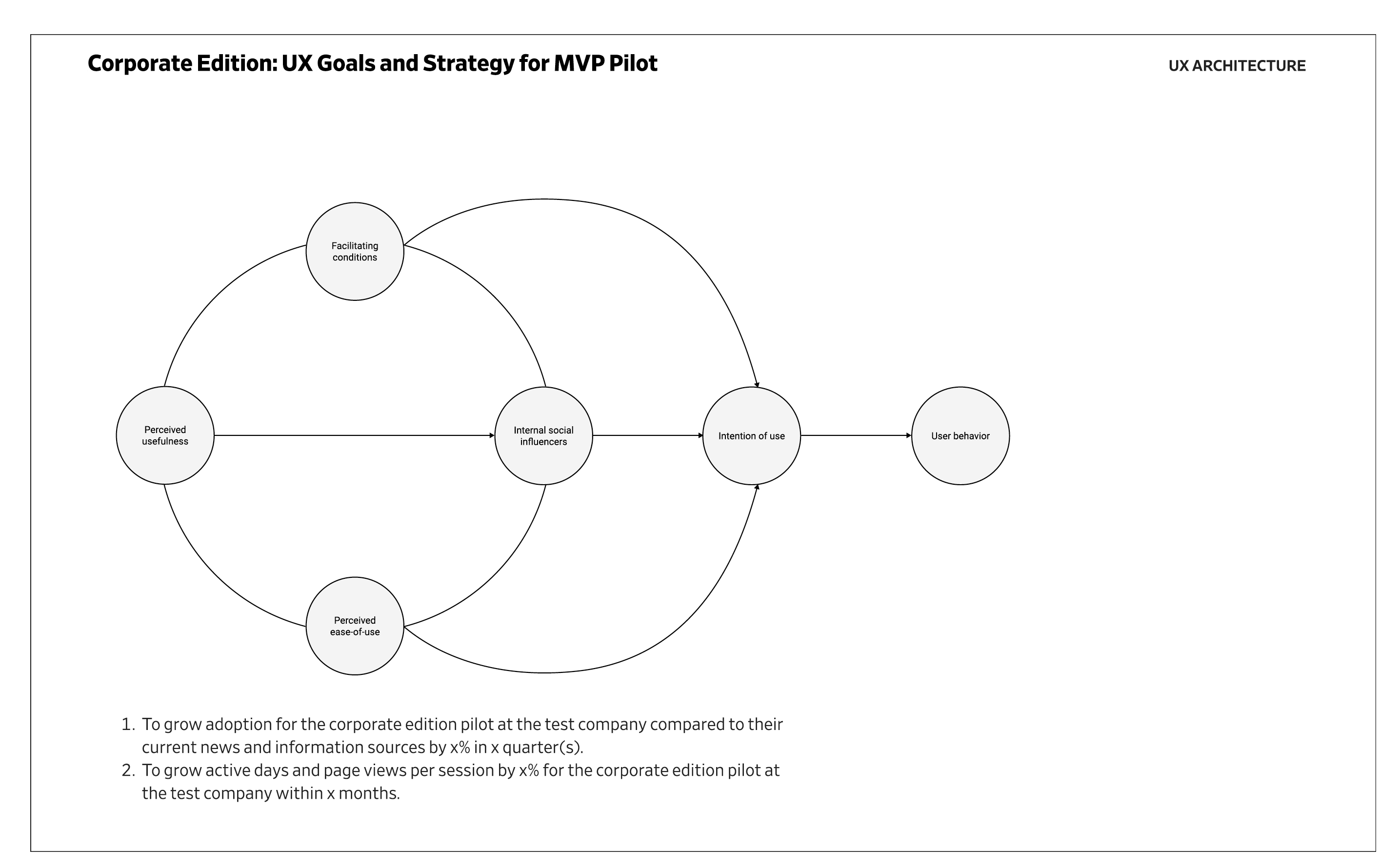
The diffusion of the new technology strategy with associated KPIs
Addendum
A patentable idea of using deep learning neural networks to generate layouts based on a list of recommended content. Thus, the process could be controlled by machine learning from content to display using transfer learning and reinforcement learning in a convolution neural network.
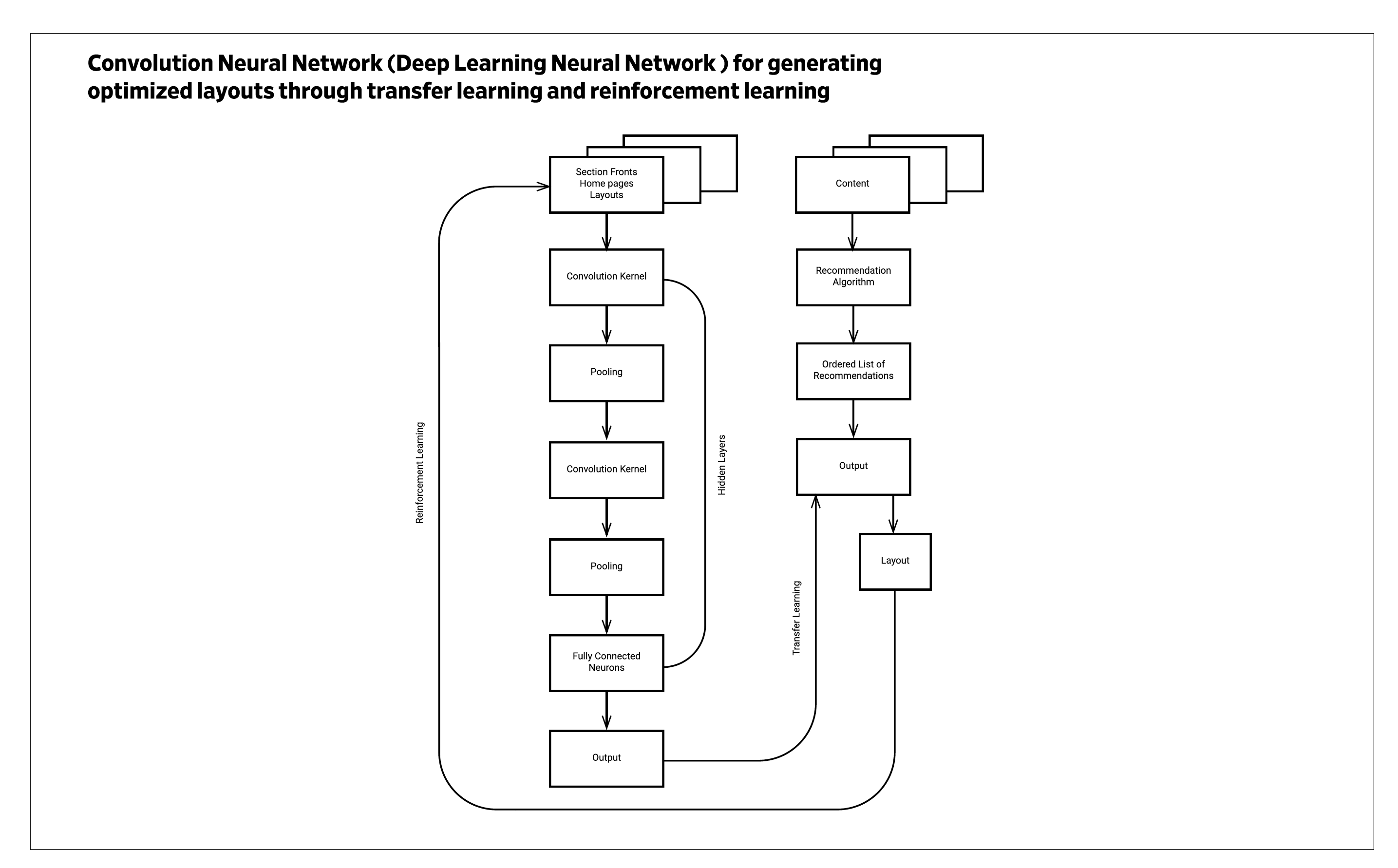
Deep learning neural network for generating optimized layouts using a convolution neural network.
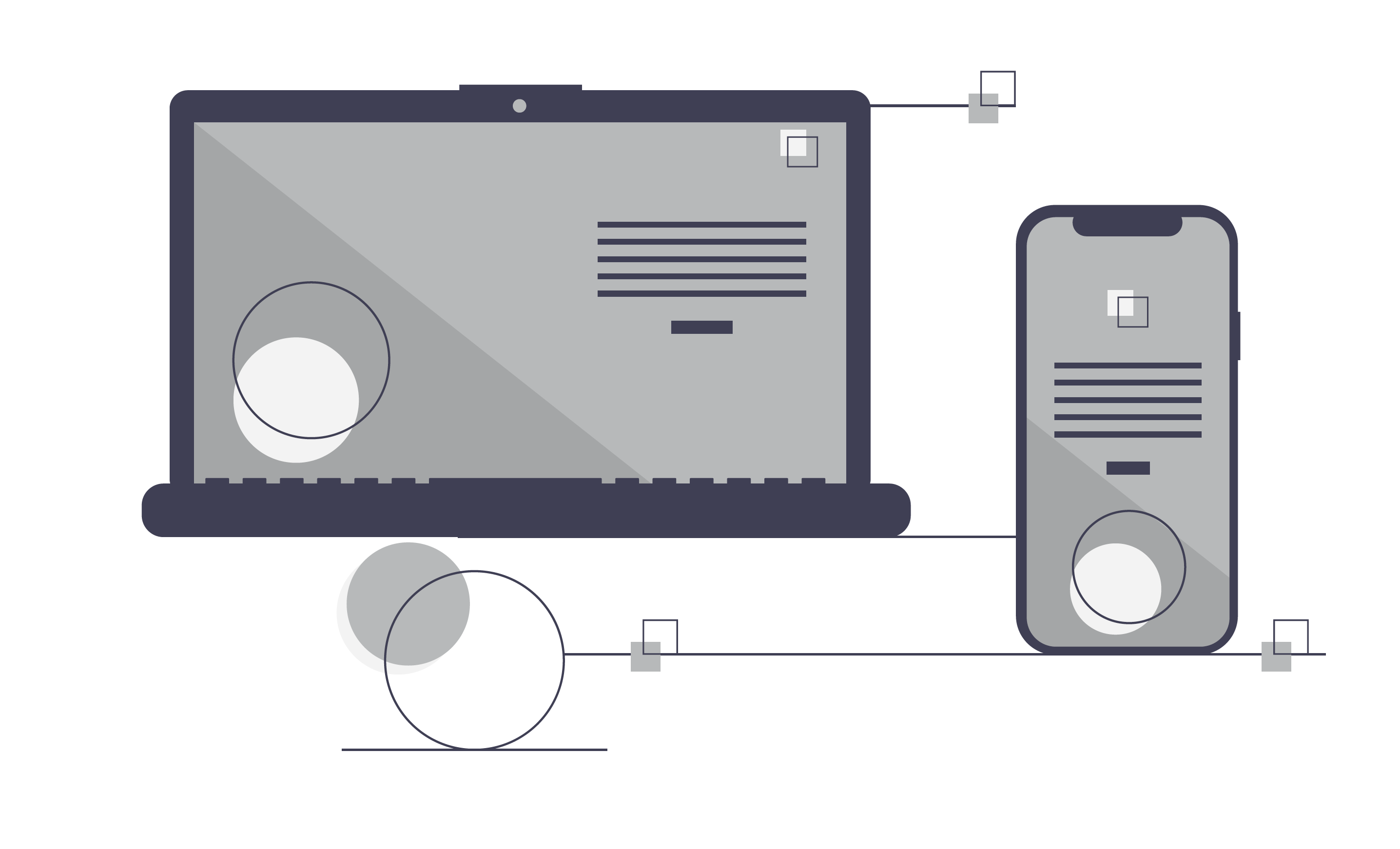
Case Study No. 2: The Audio Center.
Audio presents an important strategic opportunity to grow DJ’s business through its utilization as a content stream, marketing channel, retention tool, and revenue driver.
Devices: DJ Universe Strategic Opportunity
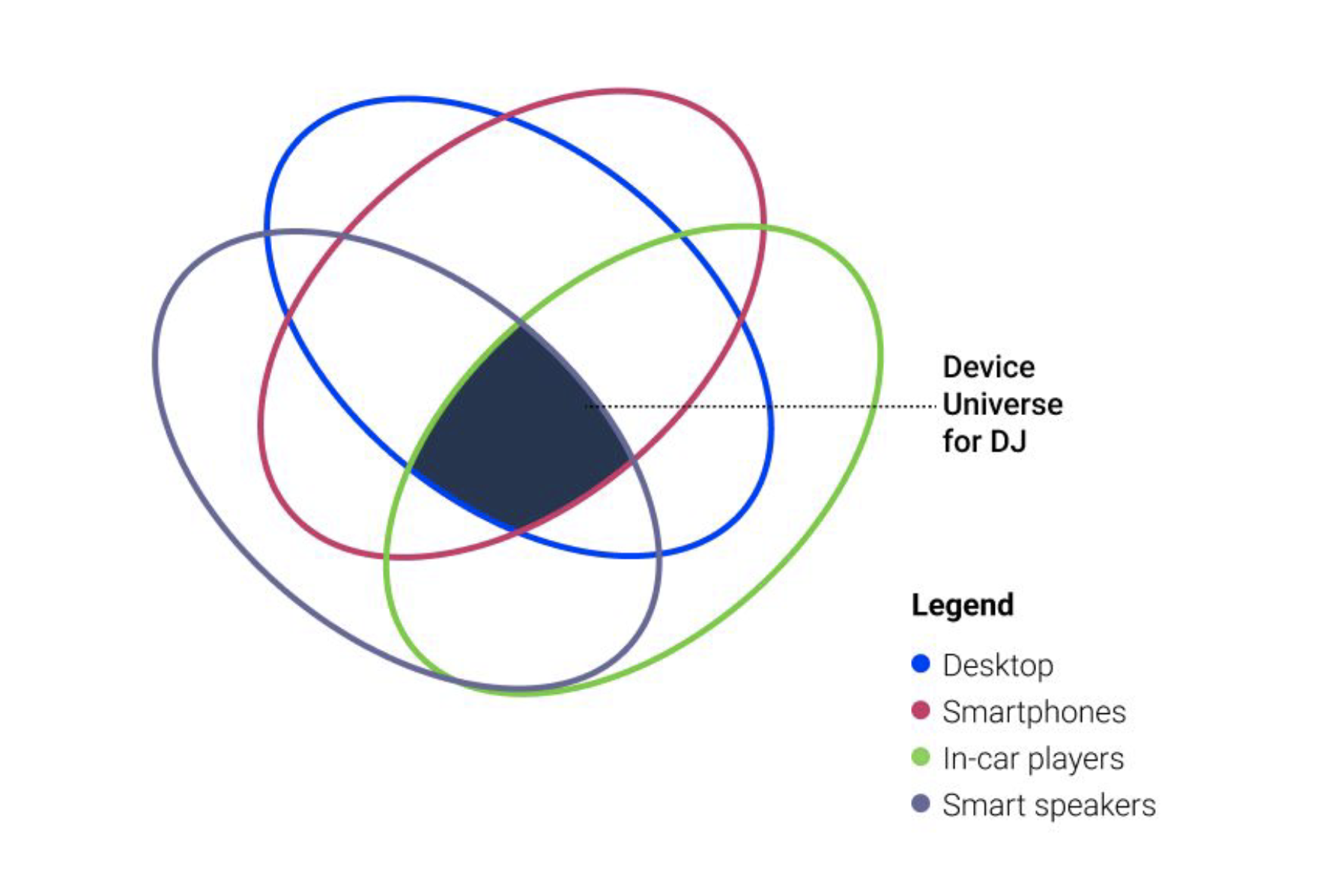
Early prototype showing accessing the entire WSJ articles universe via audio
Desktop navigation study prototype
Destination Touchpoints
A destination touchpoint can begin on any device including desktop. The end-user can move freely through the experience with technology such as bluetooth and wifi.
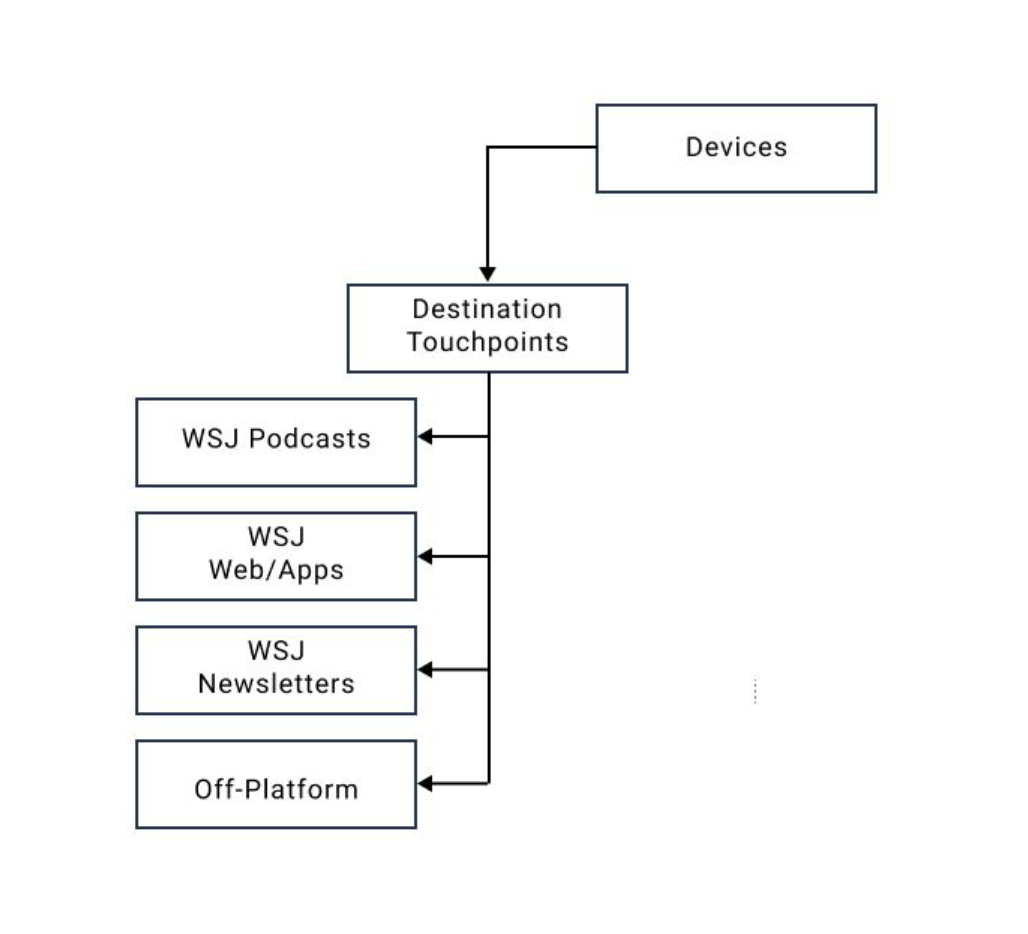
Technological Enablers: Apple User Experience
With bluetooth technology, the basic idea is that Apple’s handoff technology allows the user to start consuming content on one device (iPhone, iPad, Mac, or Apple Watch, and by extension a smart speaker or in-car player) and then pick it up on another device right where they left off.
Technological Enablers: Android User Experience
Android has a similar technology called Bluetooth Pair:
Bluetooth Pair allows you to automatically pair with a device of your choosing. For instance, if you often connect your phone to your car's Bluetooth, you can choose to automatically make this connection when you turn on your phone's Bluetooth.
Audio Mechanisms
Audio mechanisms present the opportunities to traverse the entire DJ content universe through audio search, programmable skills on smart speaker apps, podcast content including presenters, and TTS.
Together these can form the core of the user journey meeting customers where they are when they’d like to consume content, and how they'd like to be reached for audio content in news and information.
Opportunity: Network ecosystem of integrated touchpoints connected with audio mechanisms
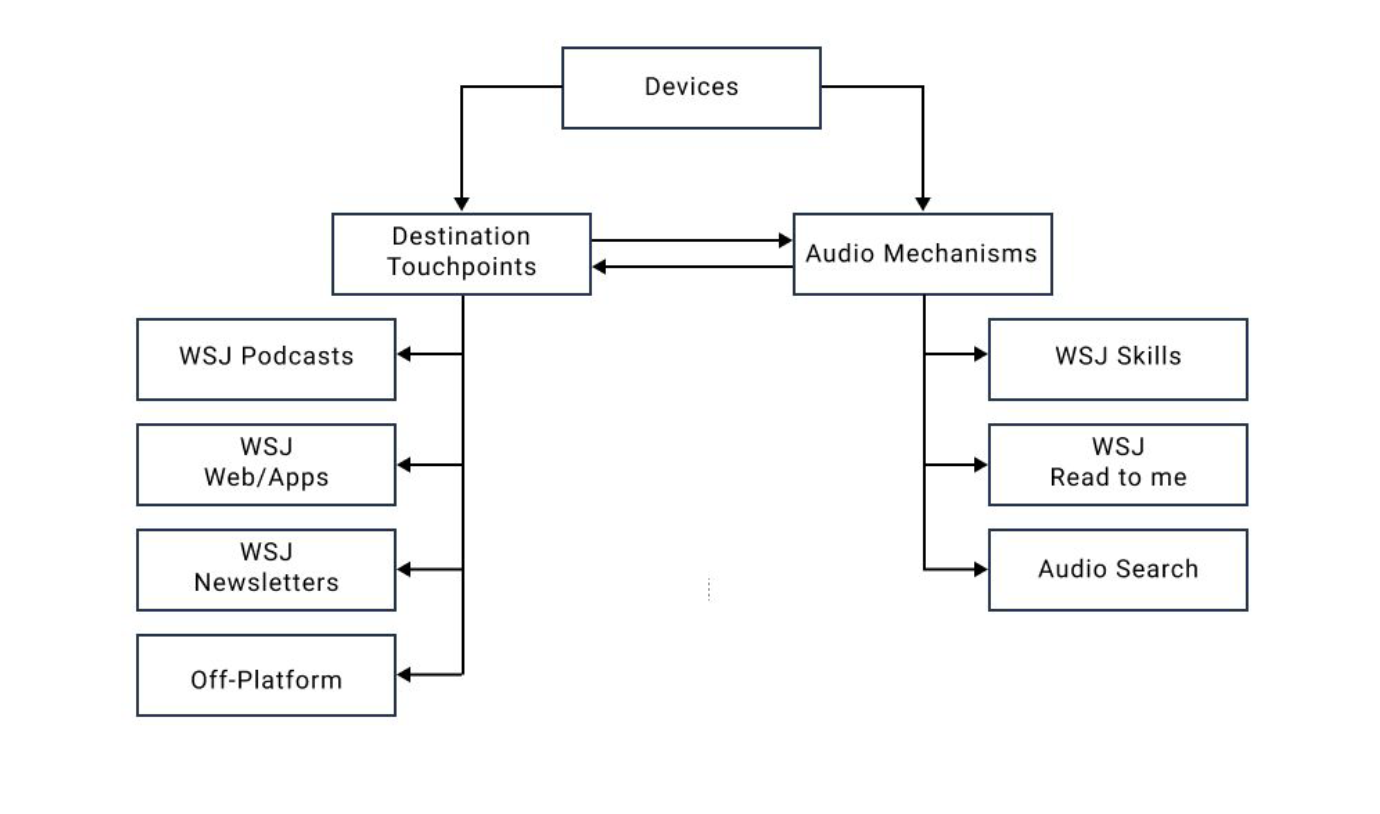
Information Architecture
A Semantic interaction model was created to explore the architecture of the experience. The most efficient and easy-to-navigate architecture was a hierarchical architecture. The use of object-oriented UX translates to a reduction of cognitive load and transfers to how we think and experience applications and the world.
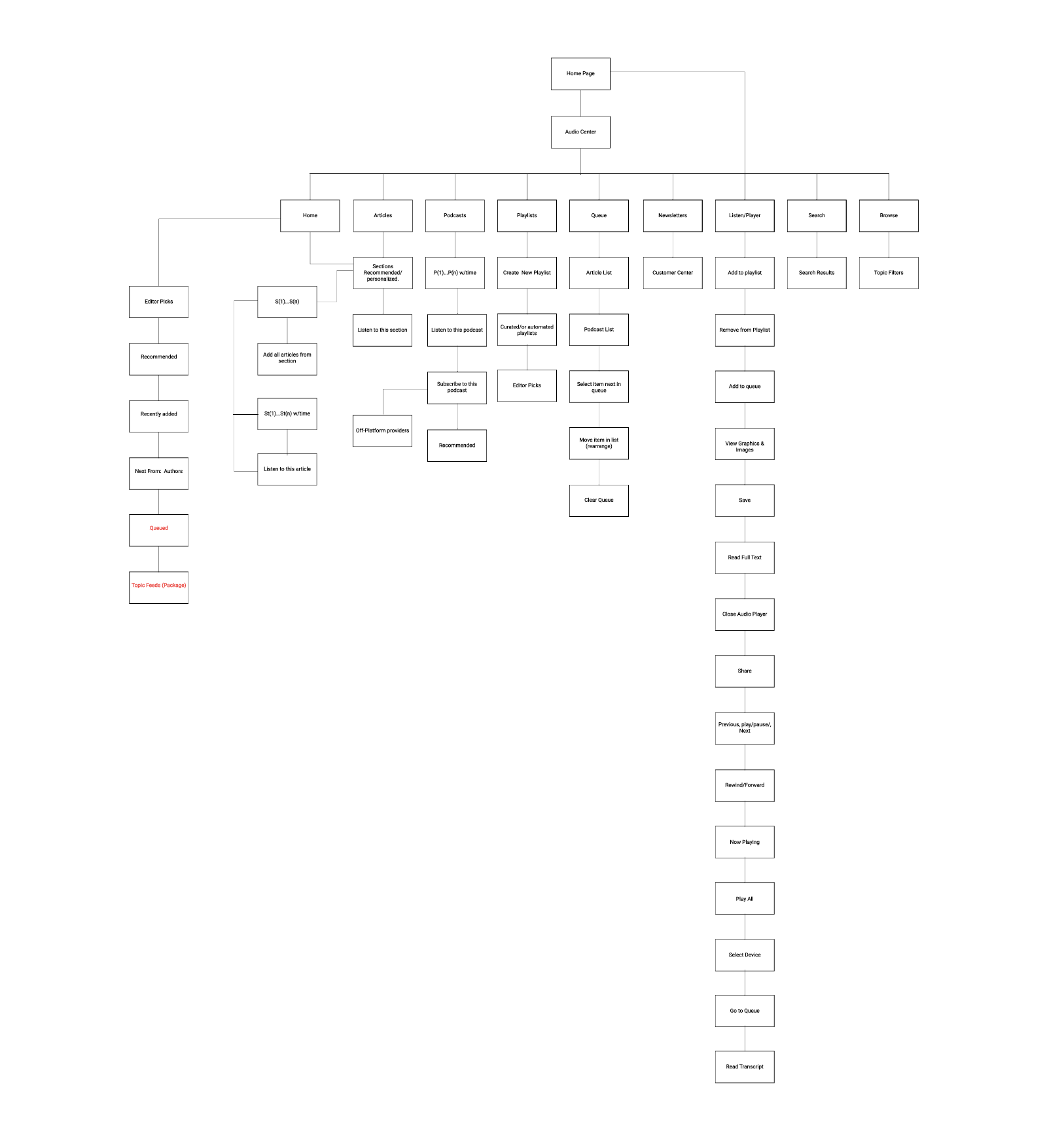
Deductive Reasoning
I put together common notions I knew to be true. I also gathered visual research to orient the experience based on the competitive analysis of audio products from competitors.
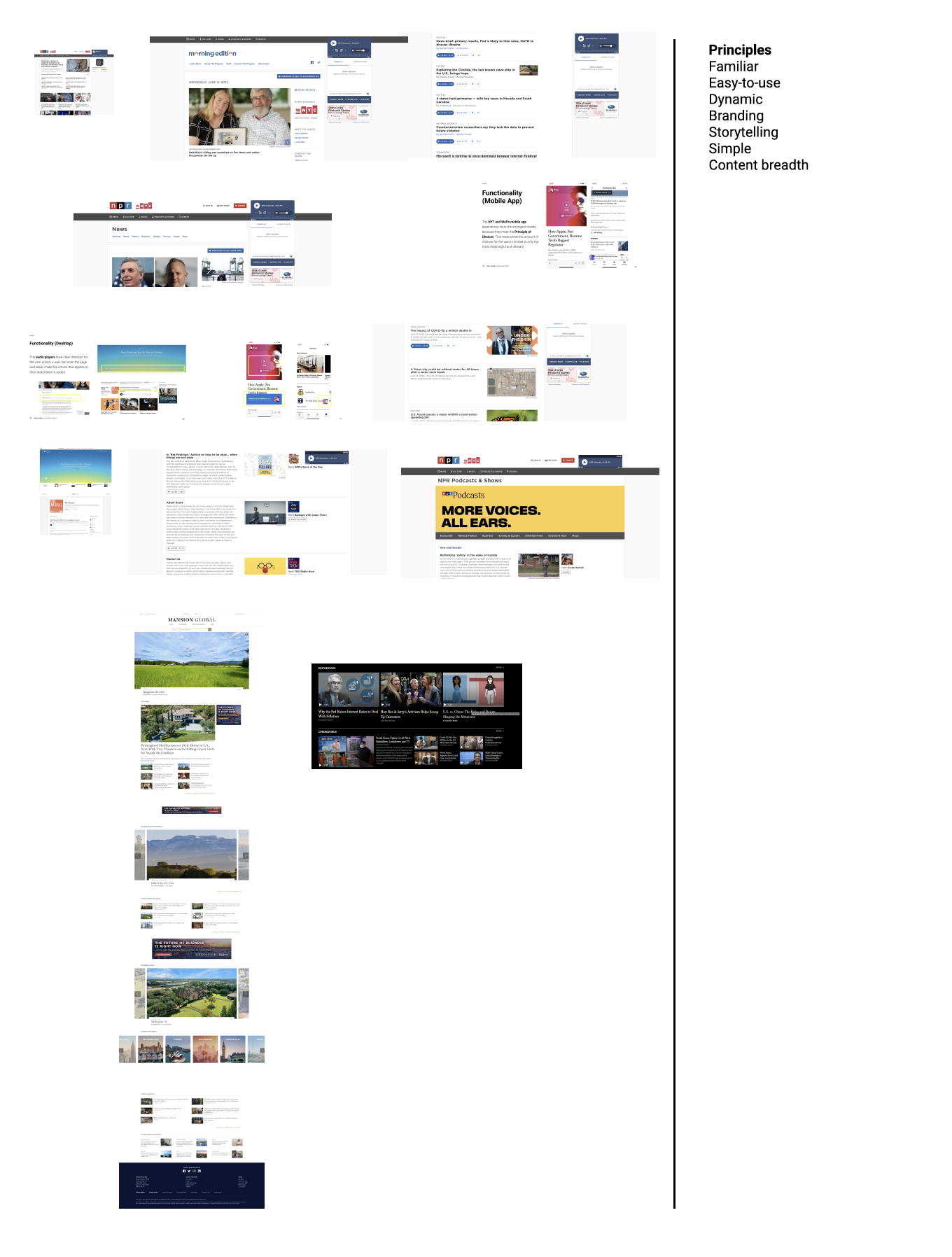
Wireframes
Wireframes were created on a tight deadline of two days. In fact, this project initially took 3 days from briefing to execution. After internal validation with stakeholders, the experience was reduced to an MVP due to time-to-market constraints.
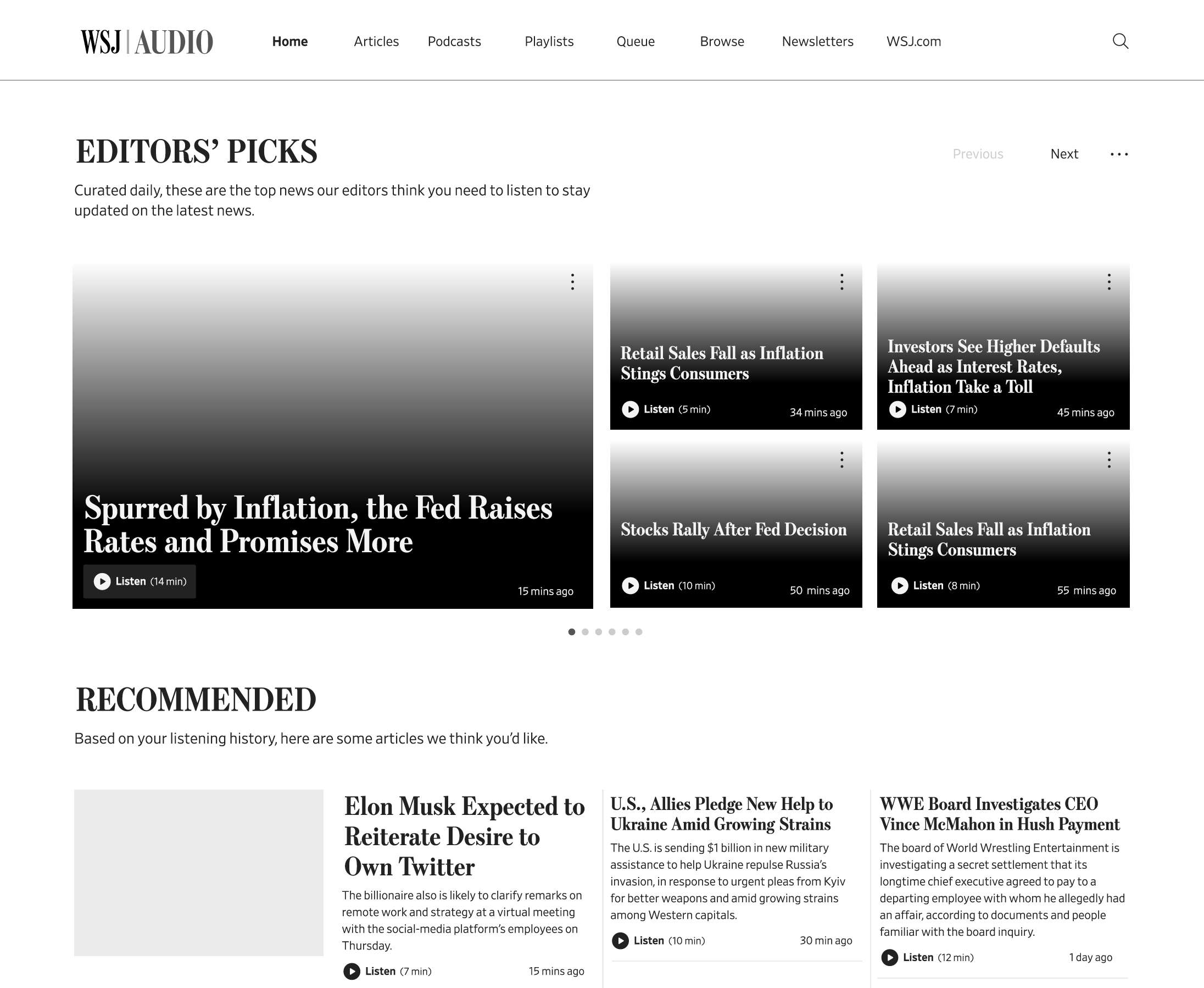
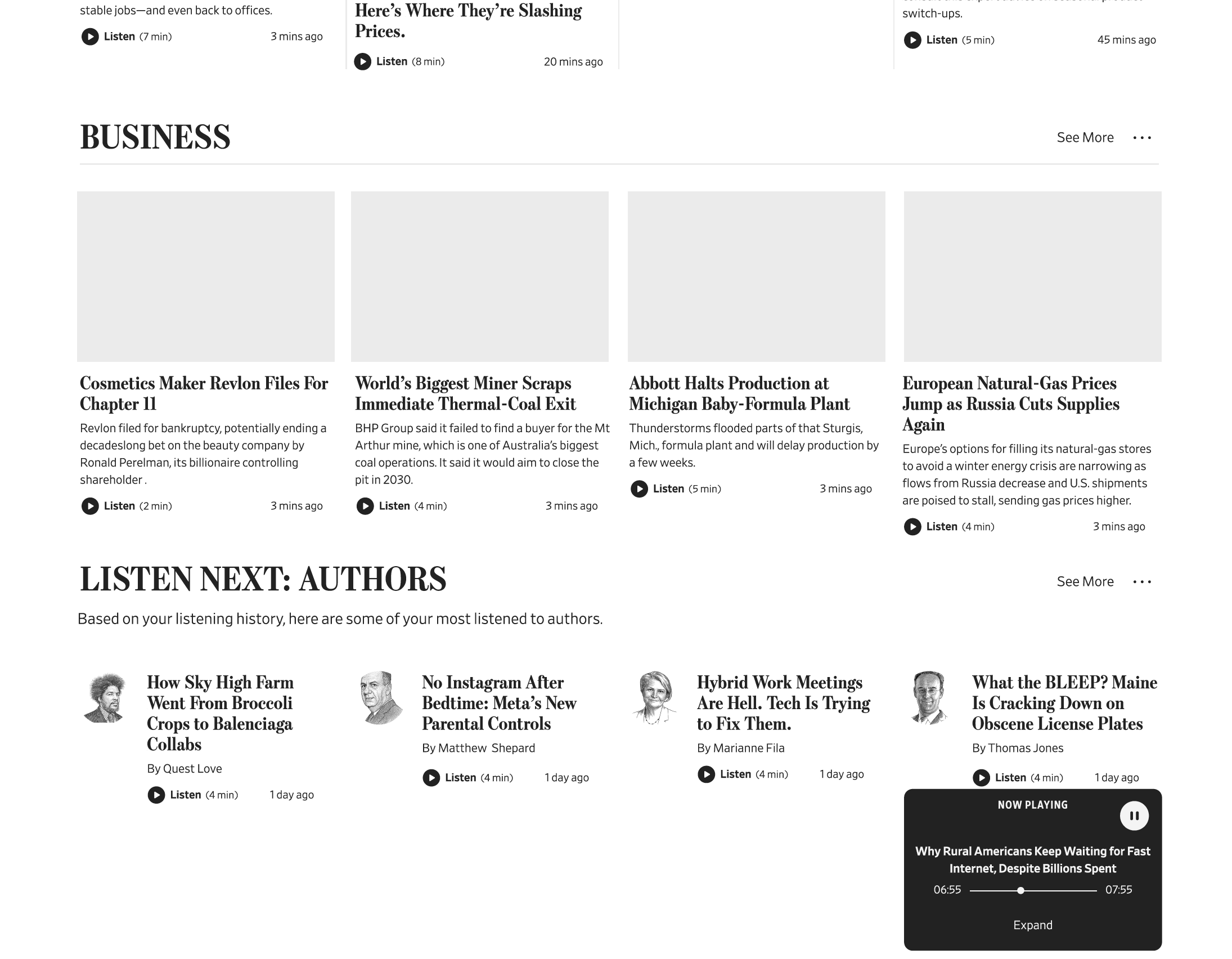
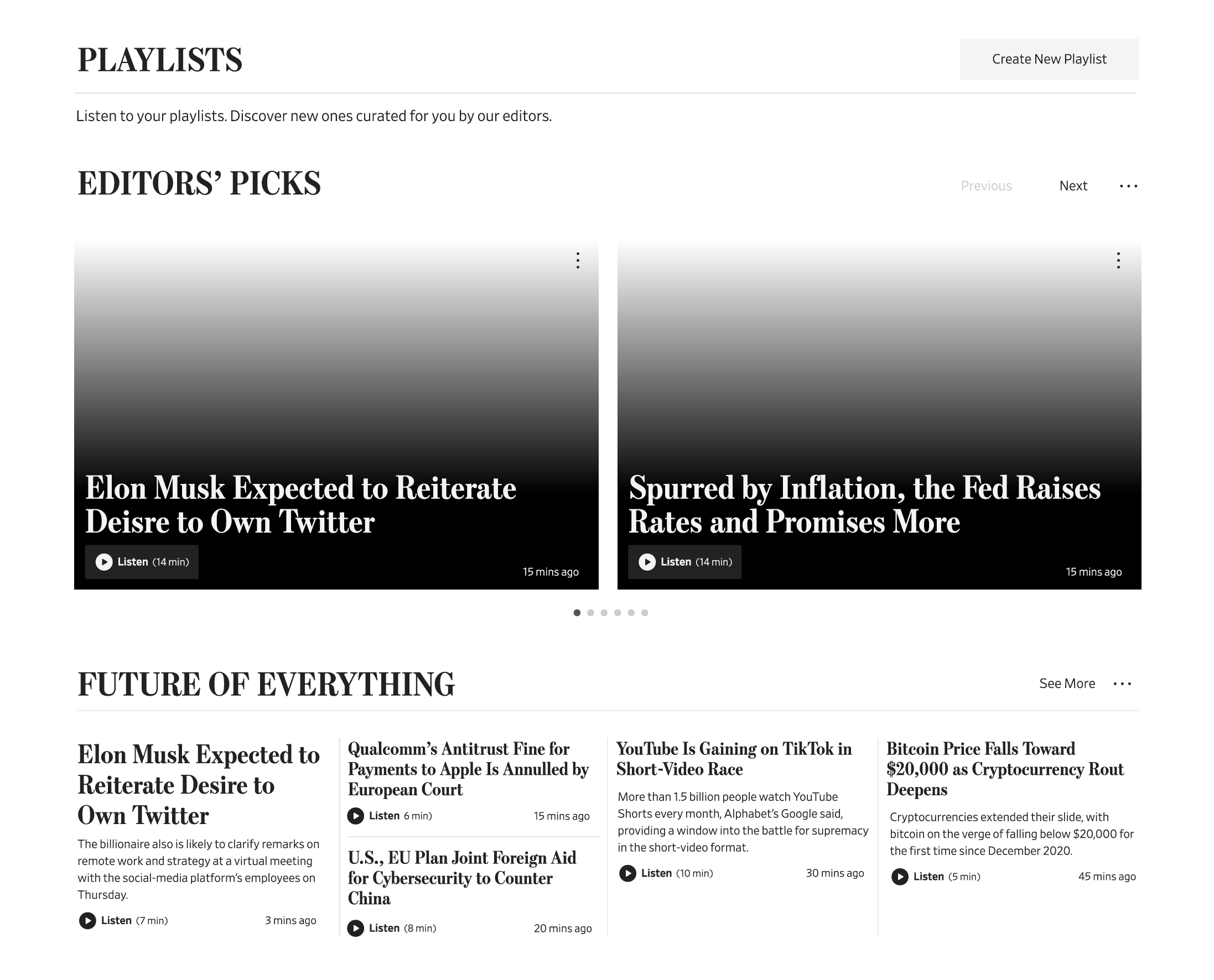
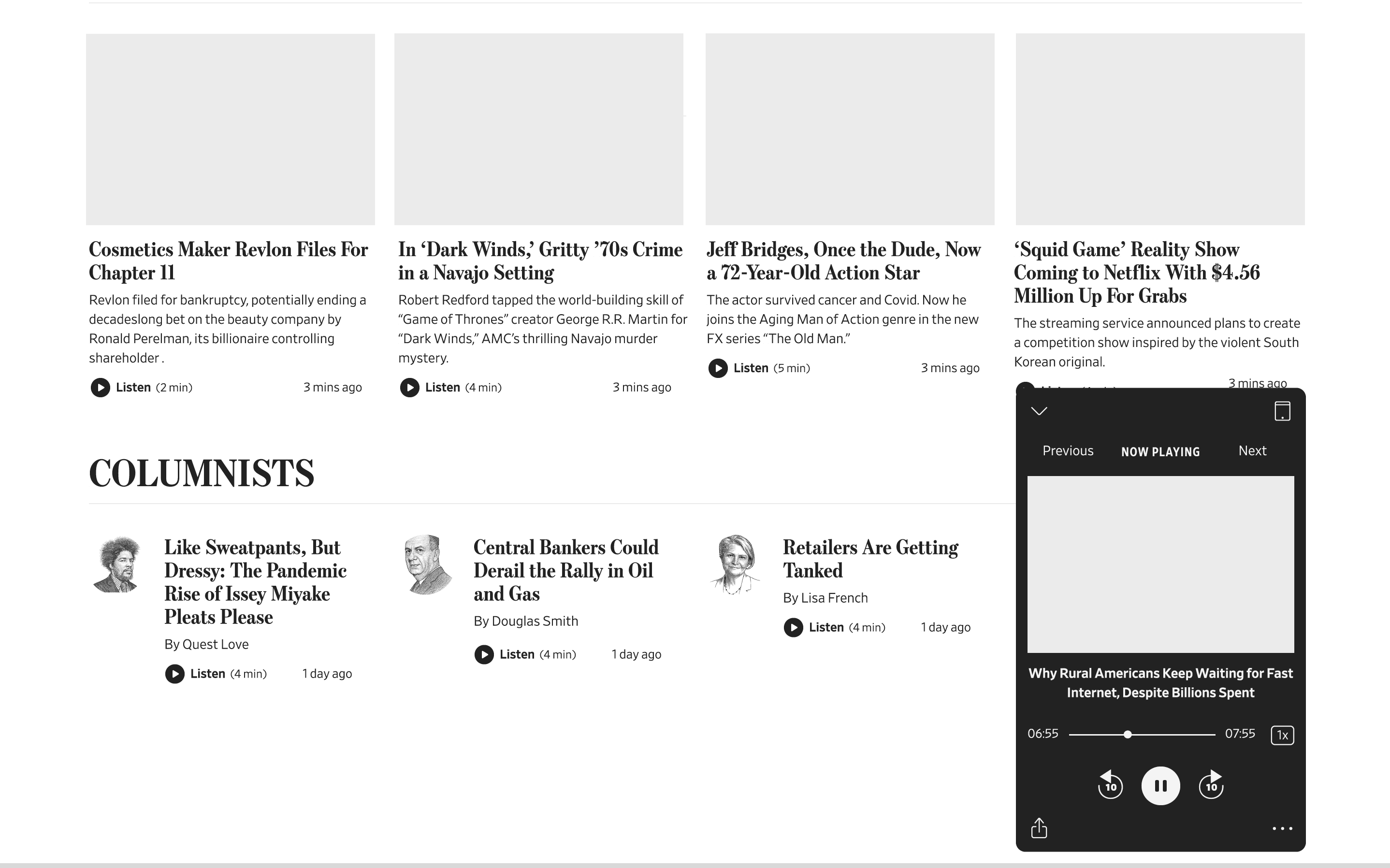
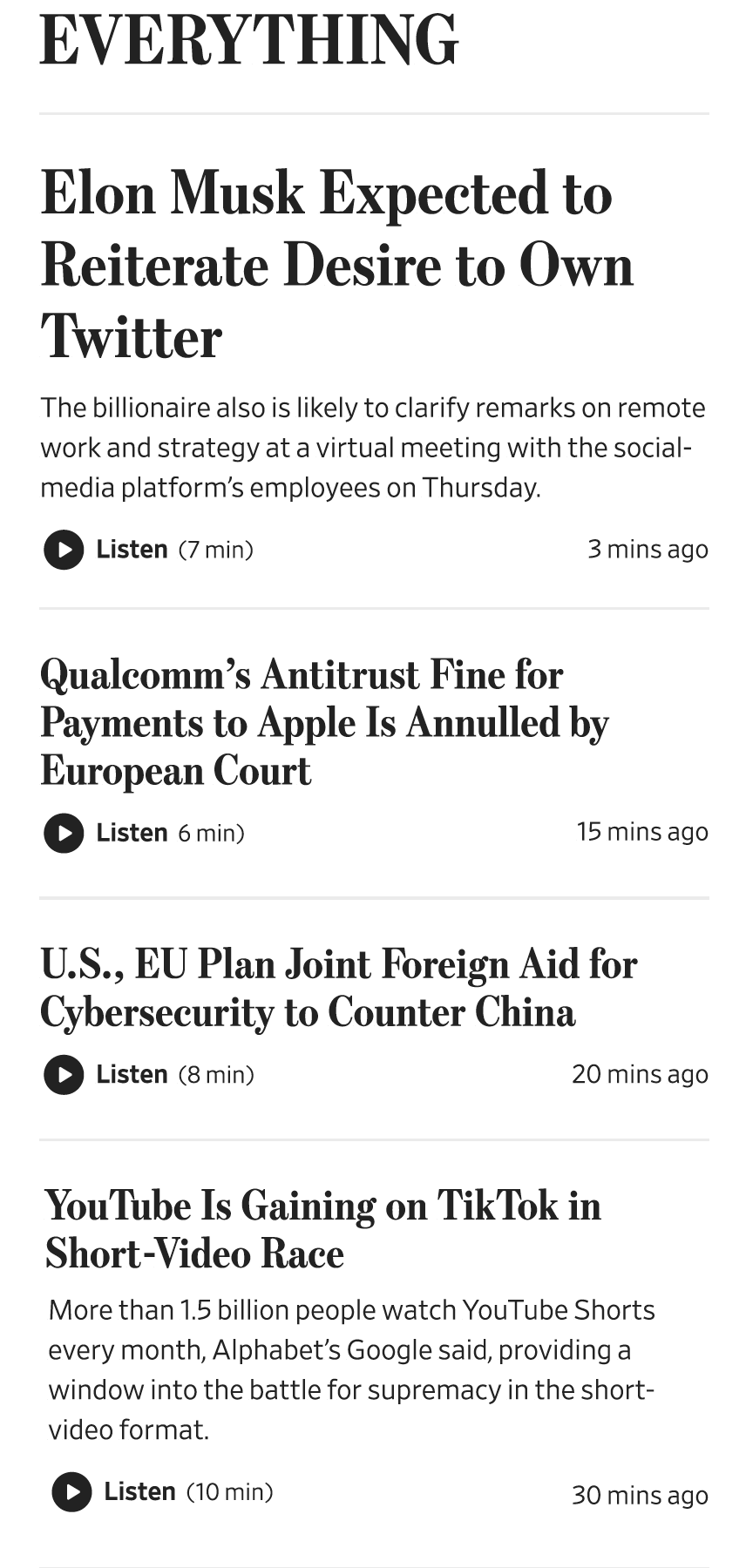
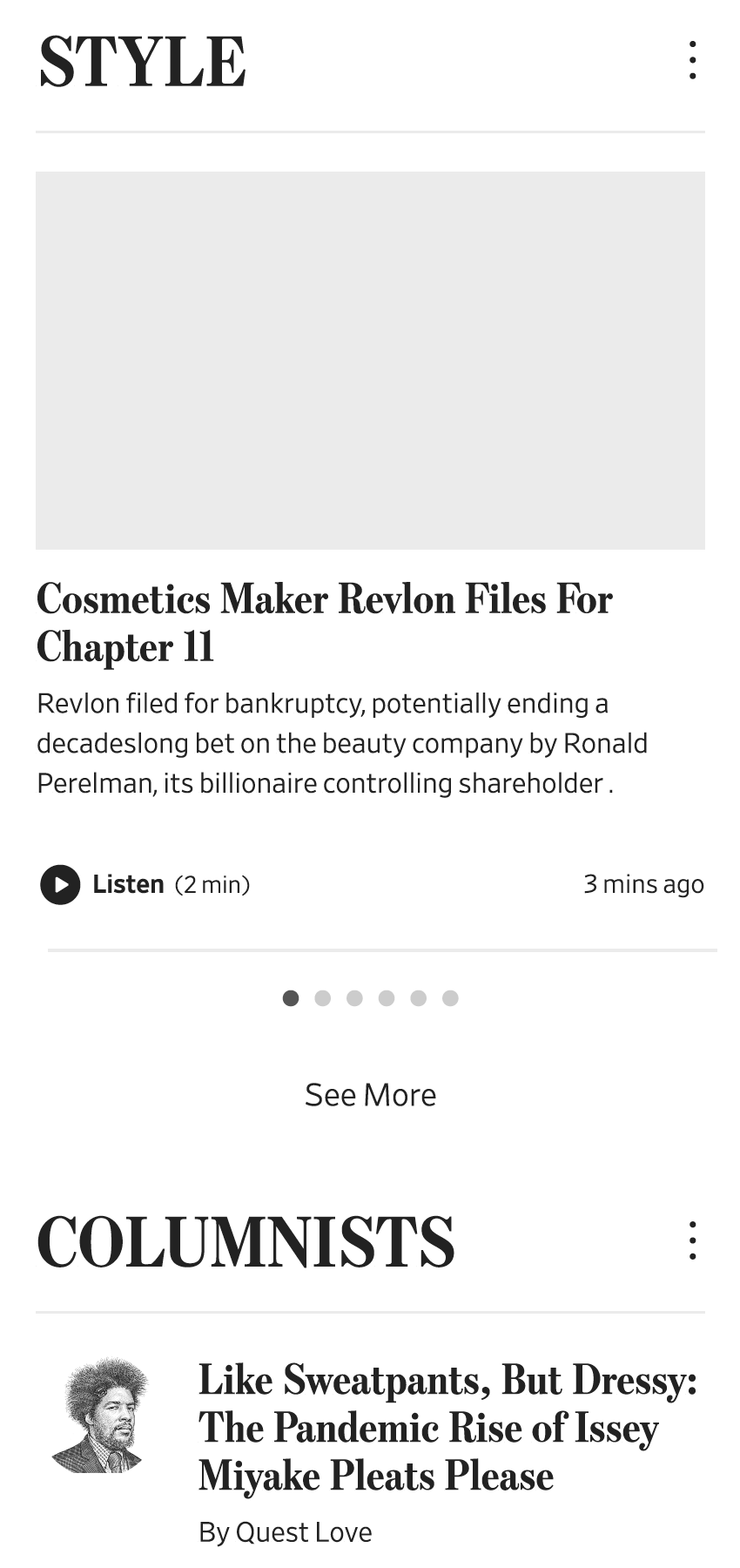
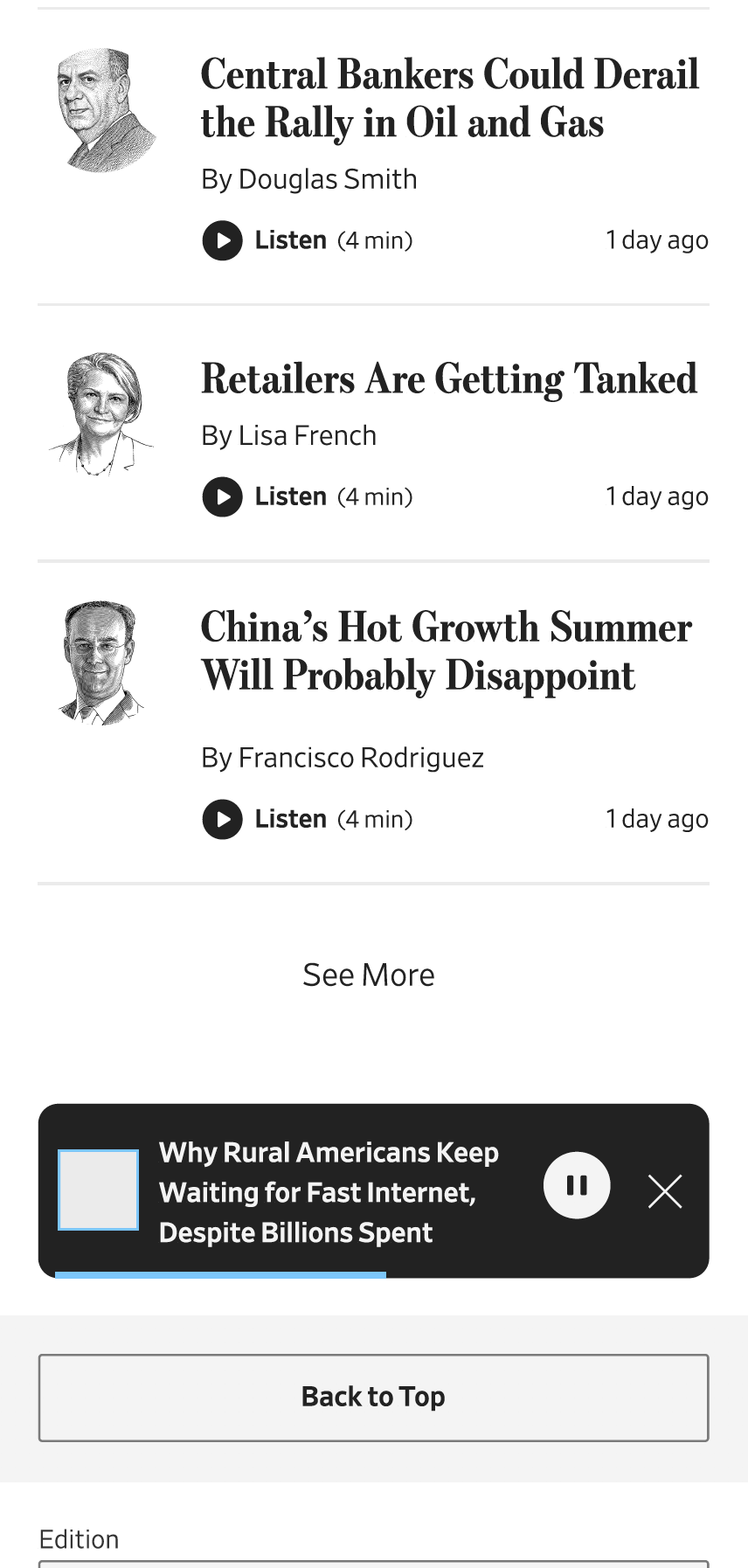
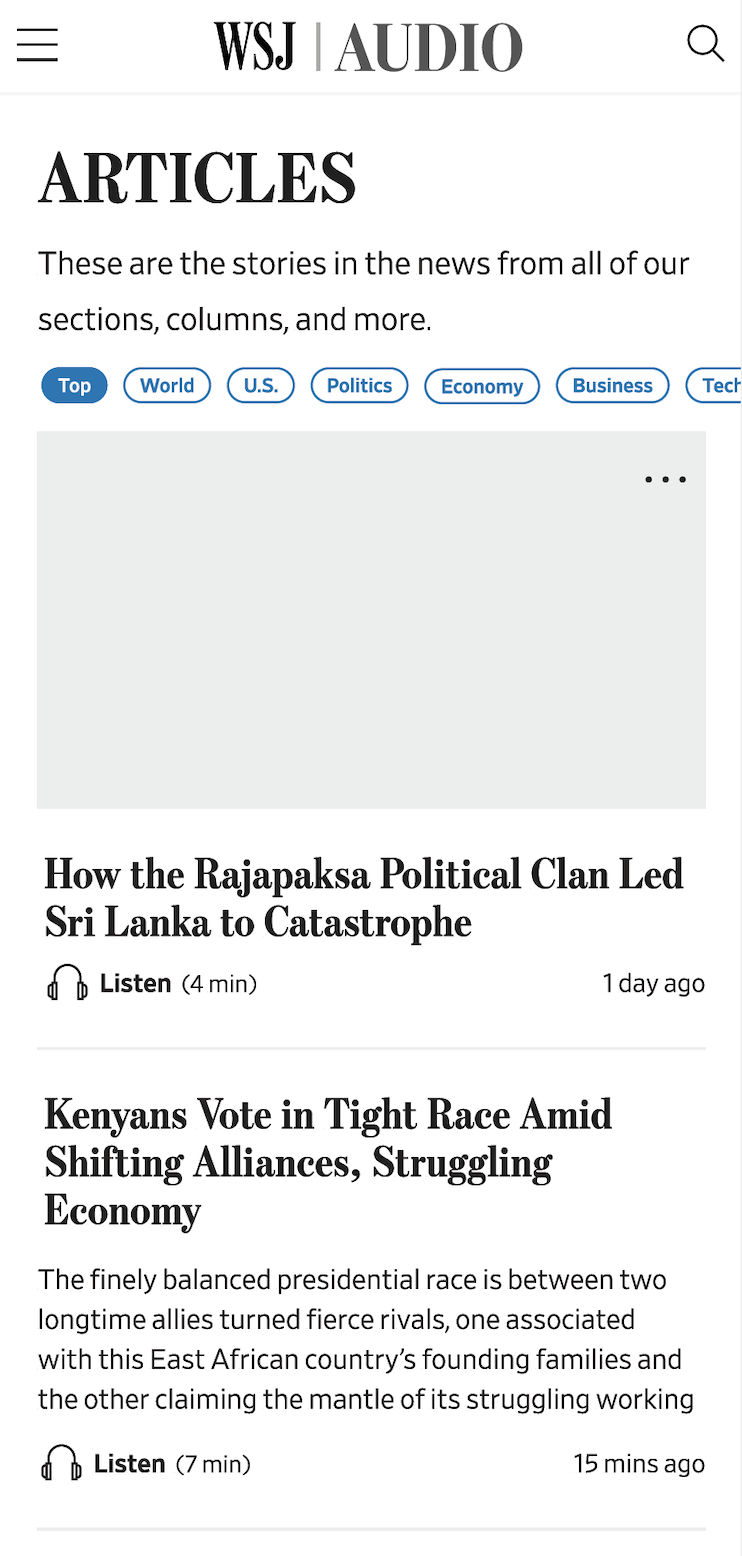
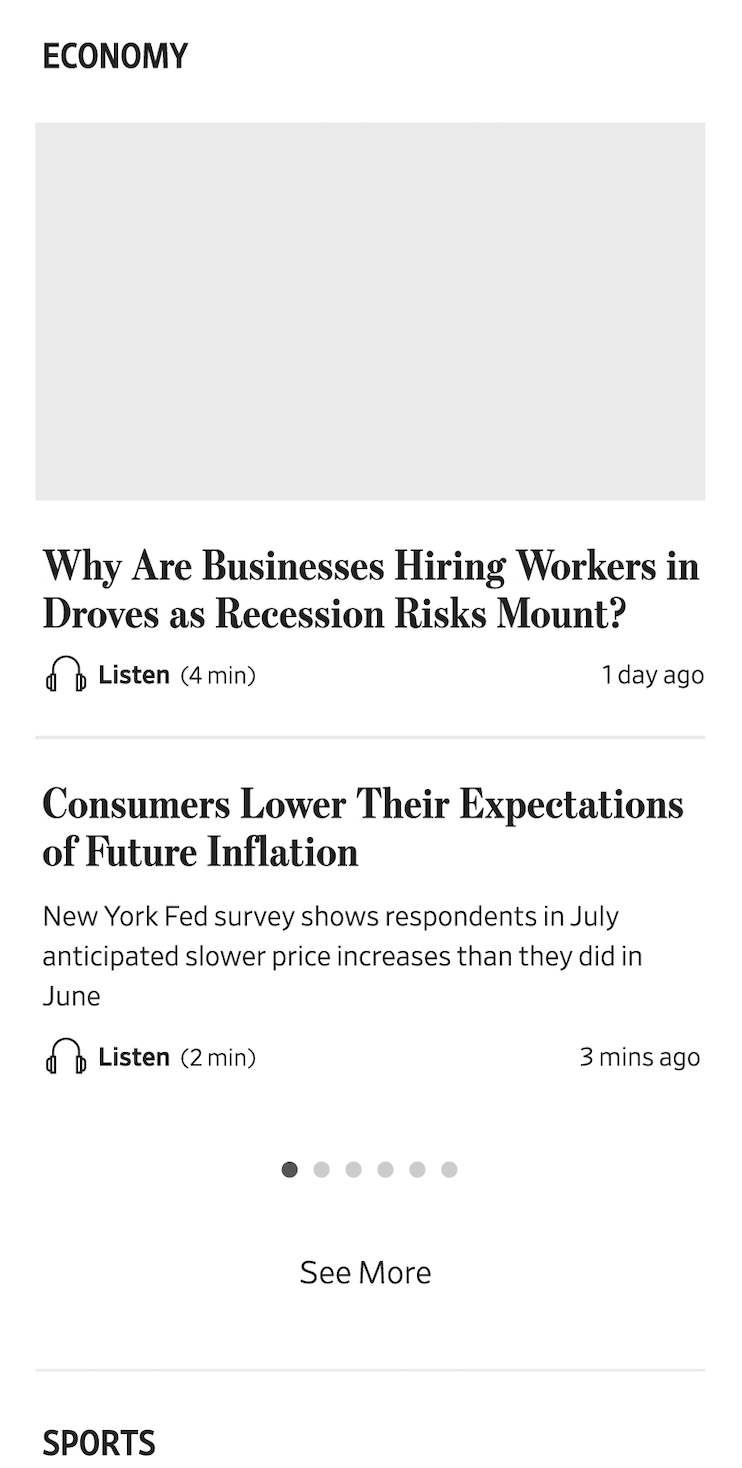
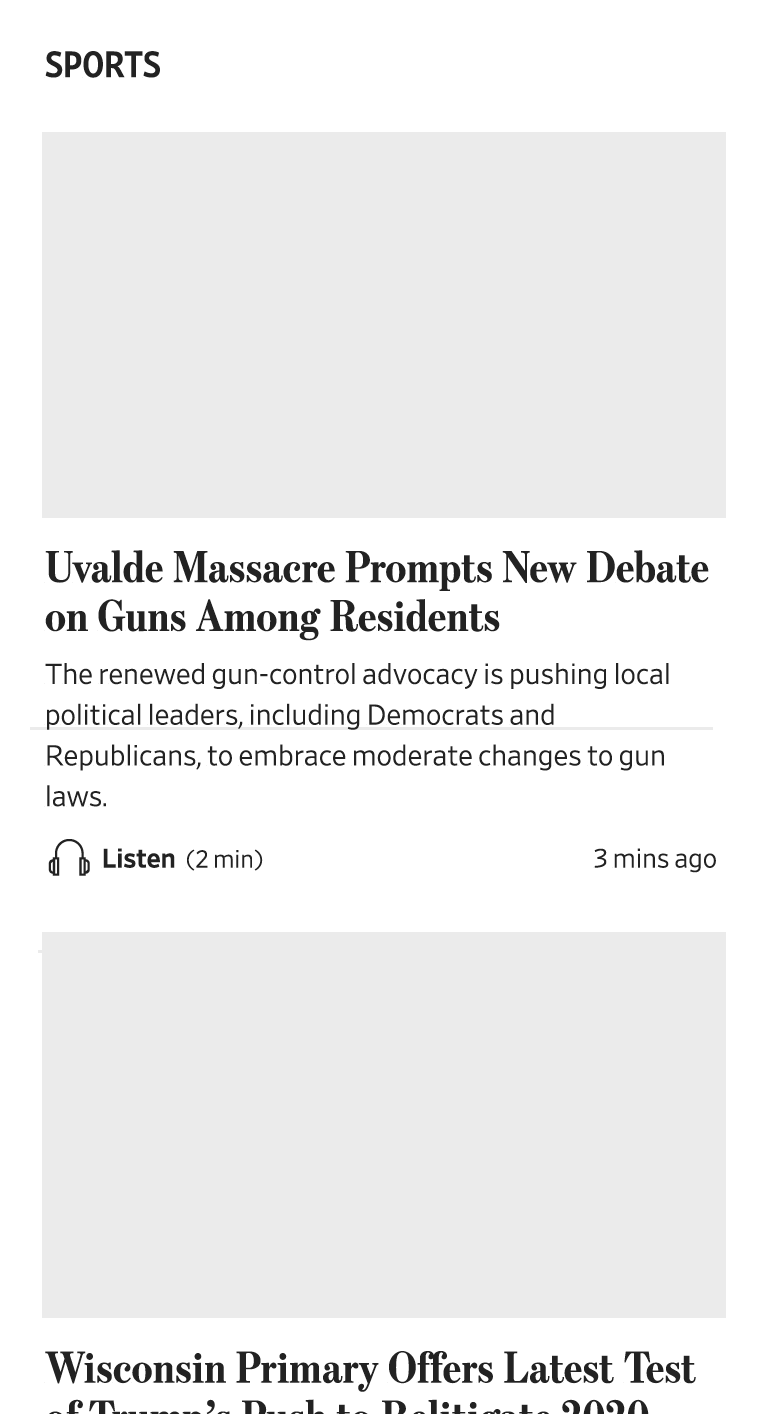
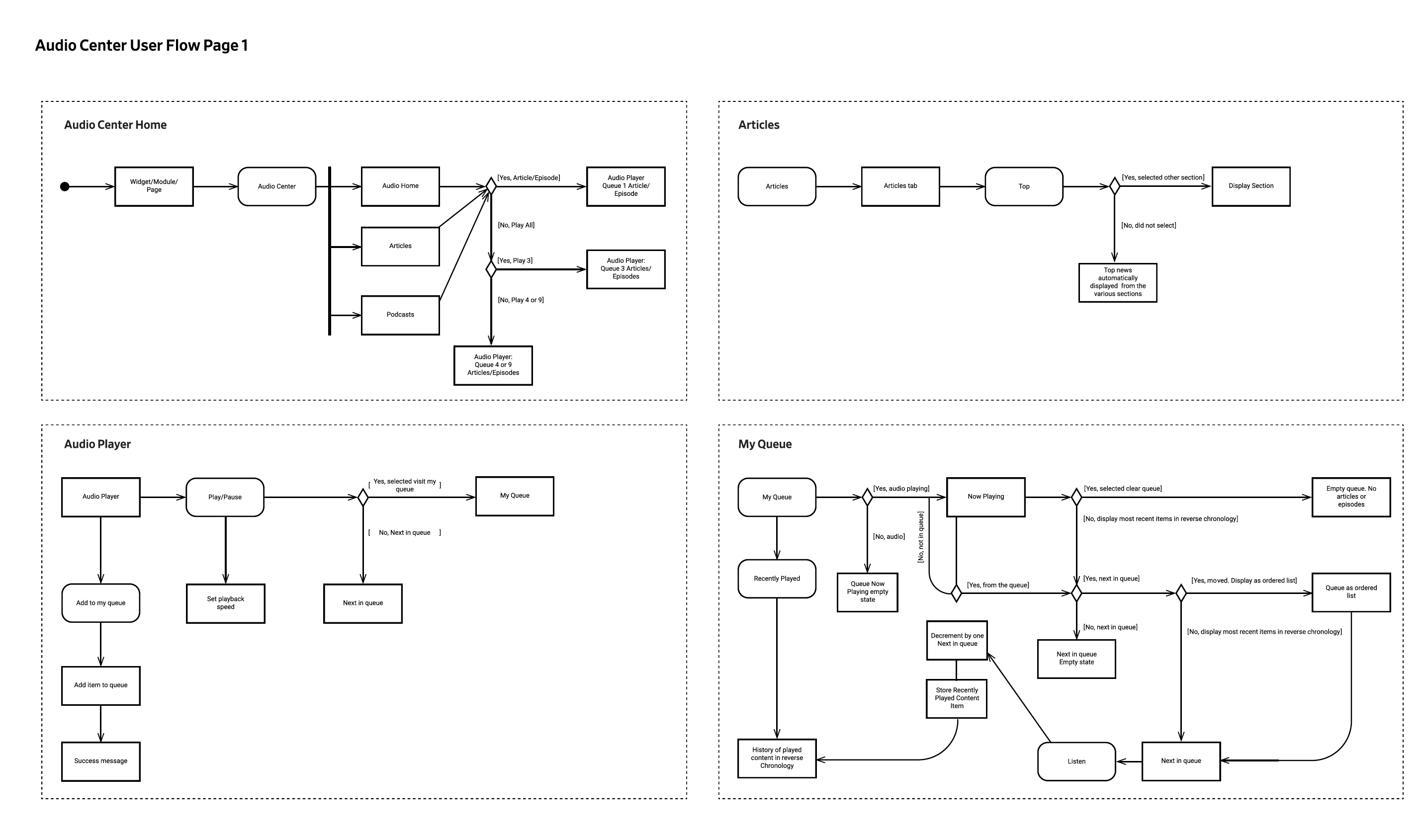
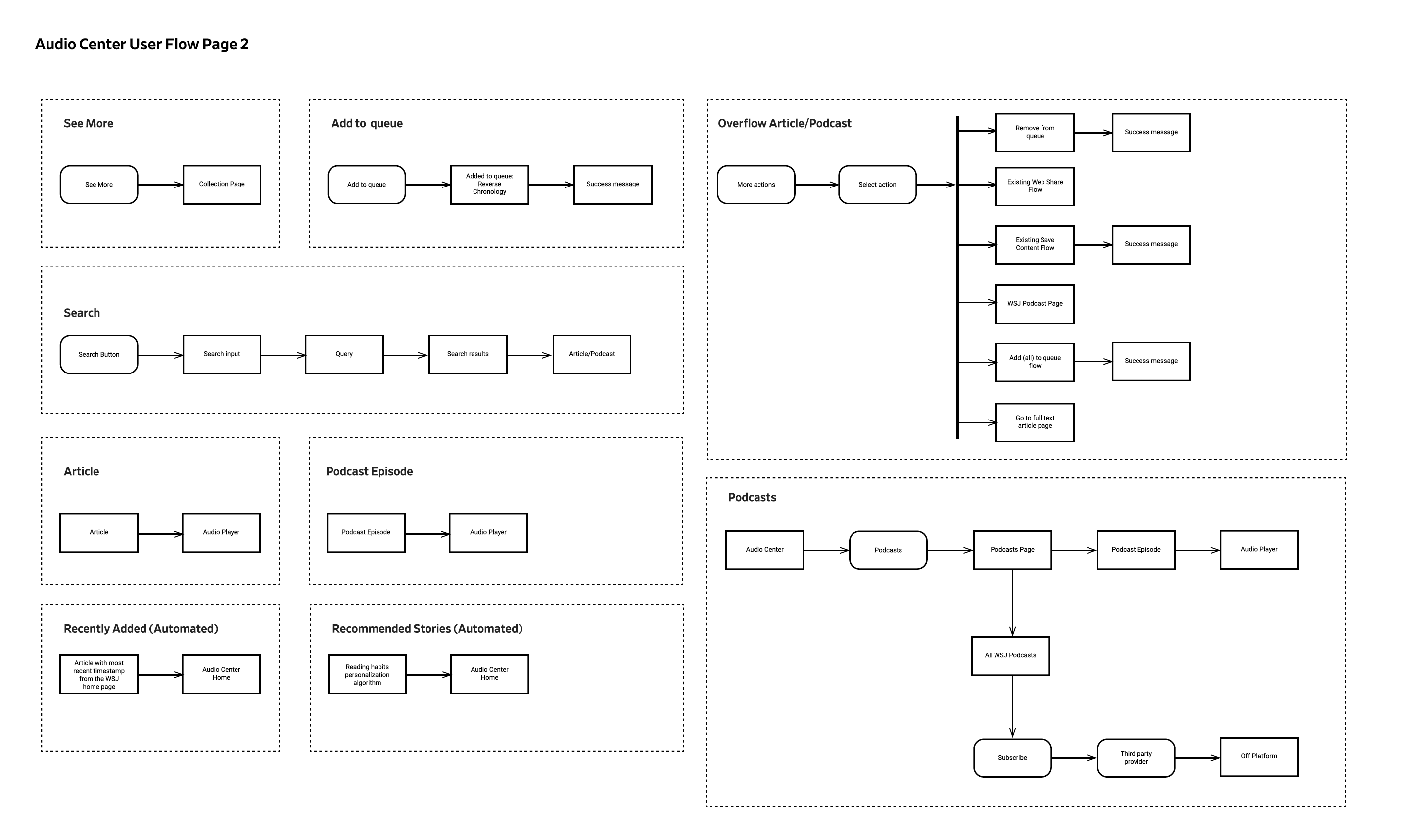
User Flows
These flows map out the MVP experience. Some of the features and functionality have been reduced due to the release schedule. However, it does show an efficient and streamlined experience that brings value to the listener. We chose to remove some functionality such as playlists from the MVP.